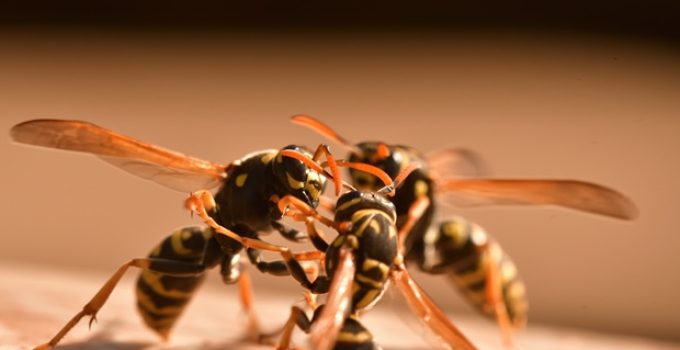How do bees communicate with each other? The answer is more sophisticated than you might expect from an insect. Bees use a rich system of movement, scent, touch, and sound to coordinate everything from foraging to hive defense. Their most famous method—the waggle dance—has fascinated scientists for decades and reveals just how complex bee communication really is.
Dive Deeper
The Waggle Dance: GPS for Bees
Pheromones: The Hive’s Scented Signals
Vibration and Sound: Buzzing as Language
Trophallaxis: Food Sharing and Messaging
🐝 Bee Communication Breakdown Table
🎯 Final Thoughts
📚 References
🧭 The Waggle Dance: GPS for Bees
The waggle dance is a figure-eight motion used by honey bee foragers to inform others of a food source’s distance and direction from the hive.
Key parts of the dance:
- Waggle run: The straight part of the dance, indicating direction.
- Angle to vertical: Corresponds to the angle of the food source relative to the sun.
- Duration of waggle: Reflects distance; longer waggle means farther away.
Bees interpret these dances inside the dark hive using their antennae and body vibrations.
| 📍 In 1973, Karl von Frisch won the Nobel Prize in Physiology or Medicine for discovering the waggle dance—a breakthrough in understanding animal communication [1]. |
🌺 Pheromones: The Hive’s Scented Signals
Bees also communicate using chemical signals called pheromones, which play a crucial role in everything from reproduction to hive defense.
Some important bee pheromones include:
- Queen mandibular pheromone: Regulates worker behavior and suppresses new queen development.
- Alarm pheromones: Released when bees sting, prompting others to defend the hive.
- Nasonov pheromone: Helps bees find their way back to the colony.
| 🧪 According to Annual Review of Entomology, honey bees release over 15 distinct pheromones to coordinate hive activity and survival [2]. |
🔊 Vibration and Sound: Buzzing as Language
Beyond dances and scent, bees use vibrational signals to communicate. These are especially important in the dark interior of the hive where visibility is limited.
Examples include:
- Stop signals: Short buzzes to warn foragers of danger at a food site.
- Vibrational pulses: Used by queens to assert dominance or by workers to activate others.
Sound frequencies and vibration patterns can influence division of labor, brood care, and swarming behavior [3].
🍯 Trophallaxis: Food Sharing and Messaging
Bees also practice trophallaxis—the direct exchange of food from one bee to another. But this isn’t just about nourishment.
During trophallaxis, bees also:
- Share chemical cues from nectar sources
- Pass along hormonal signals
- Communicate social status or readiness to forage
This behavior helps the colony function like a single superorganism, integrating foraging, care, and defense systems.
🧾 Bee Communication Breakdown Table
| Communication Method | How It Works | Purpose |
|---|---|---|
| Waggle Dance | Body movement & direction in figure-8 | Locate food & water |
| Pheromones | Chemical signals via glands | Regulate hive roles, defense, mating |
| Vibration/Sound | Buzzes & body tremors | Danger signals, queen assertion |
| Trophallaxis | Mouth-to-mouth food exchange | Share food, scent, information |
🎯 Final Thoughts
So, how do bees communicate? Through an elegant blend of movement, scent, vibration, and food sharing, bees maintain one of the most coordinated social systems in nature. From the waggle dance’s GPS-like accuracy to the queen’s powerful pheromones, every signal serves a purpose in the hive’s survival. These behaviors demonstrate just how complex and intelligent insect societies can be—despite their tiny brains.
📚 References
- Frisch, K. von. (1967). The Dance Language and Orientation of Bees. Harvard University Press.
- Slessor, K. N., Winston, M. L., & Le Conte, Y. (2005). Pheromone communication in the honeybee (Apis mellifera L.). Annual Review of Entomology, 50, 371–398. https://doi.org/10.1146/annurev.ento.50.071803.130419
- Tautz, J. (2008). The Buzz about Bees: Biology of a Superorganism. Springer.
- Thom, C. (2003). The role of vibrational signals in the social organization of insect colonies: Insights from the honeybee. Insectes Sociaux, 50(1), 65–74. https://doi.org/10.1007/s000400300010
